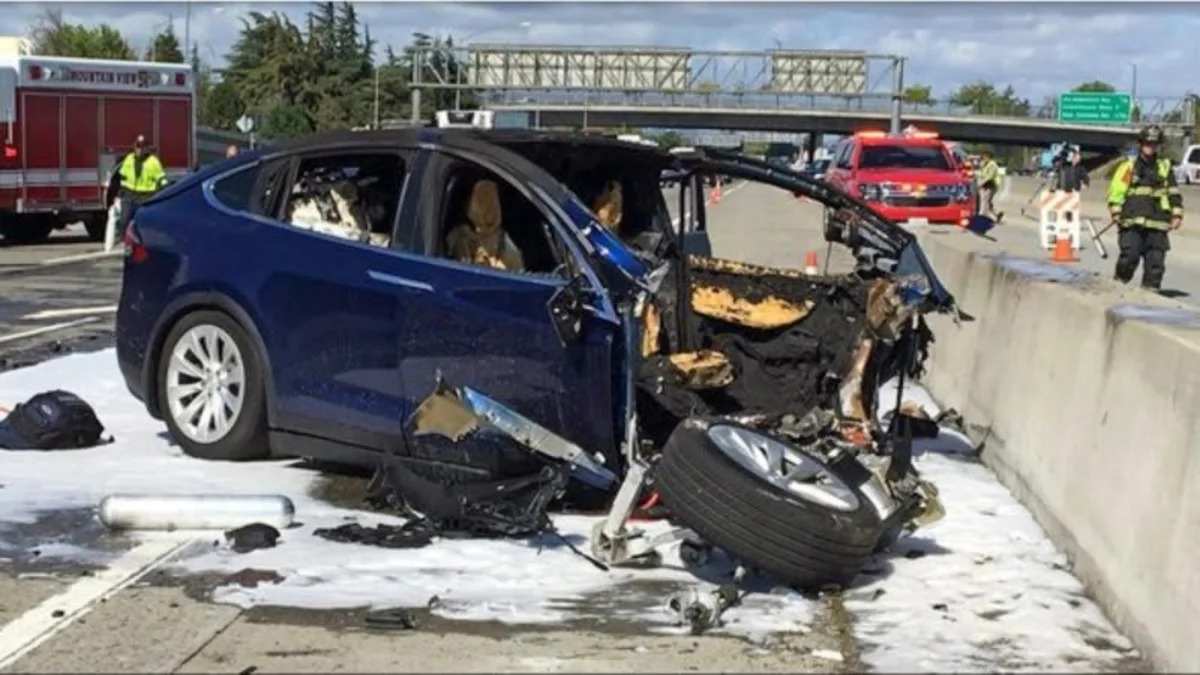Automakers are leaving far too much to chance with partially automated driver-assist technologies such as Tesla’s Autopilot, Nissan’s ProPilot Assist and Cadillac’s Super Cruise, which can encourage drivers to become inattentive as automobiles do more of the actual driving work. So says the Insurance Institute for Highway Safety, which has unveiled a set of research-based recommendations to boost safety and reduce the risk of crashes through stronger monitoring of driver inattention.
A new research paper from IIHS argues that today’s Level 2 semi-autonomous driving systems still need the driver to be involved and paying attention at all times. It argues that designs should be based around the concept of shared control, with built-in limits to prevent them from being used on roads or in conditions where it isn’t safe.
Specifically called out are systems designed to change lanes, such as the Mercedes-Benz Drive Pilot, or overtake other vehicles, which IIHS says remain limited and should only be designed to work with driver input, including steering-wheel adjustments.
“Unfortunately, the more sophisticated and reliable automation becomes, the more difficult it is for drivers to stay focused on what the vehicle is doing,” IIHS President David Harkey said. “That’s why systems should be designed to keep drivers actively engaged.”
The guidelines follow the release of an IIHS study last year that found widespread confusion about the capabilities and limits of driver-assist systems, with none more misunderstood than Tesla’s Autopilot. They also follow several examples of fatal highway crashes involving Tesla vehicles that investigators attributed to drivers inappropriately taking their hands off the wheel while Autopilot was engaged.
Following a fatal crash involving a Tesla Model X in California in 2018, the National Transportation Safety Board called for new standards for driving monitoring systems “to minimize driver disengagement, prevent automation complacency and account for foreseeable misuse of the automation.”
IIHS says its researchers reviewed dozens of academic studies to develop the recommendations, which it says should be implemented together, not in piecemeal fashion, which would make the systems more dangerous.
Several driver-assist systems already offer automated lane changing, with others including Cadillac’s Super Cruise, which won Autoblog's Technology of the Year award for 2019, planning to follow suit. Most use only the detection of the driver’s hands on the wheel to determine that he or she is paying attention.
IIHS notes that only Super Cruise uses GPS navigation to limit its use to certain highways that it has mapped and believes the technology can handle. Yet despite using a driver-facing camera to monitor whether the driver is paying attention and issuing an alert if he or she is not, Super Cruise falls short of the nonprofit’s recommendations that driver attention be monitored through multiple modes.
The organization says that neither the presence of the driver’s hands on the wheel nor the detection of his or her head facing forward, toward the road, are foolproof. Instead, IIHS recommends multiple redundancies, including adding measurements to manual adjustments on the steering wheel and how quickly the driver responds to attention alerts.
When systems detect driver inattention, IIHS says, they should trigger a series of escalating reminders, including an audible or physical alert such as seat vibration and a more urgent visual message, followed moments later by all three types of warnings. If the driver continues to be inattentive, the system should increase the distance from the vehicle it is following and pulse the brakes by way of further reminder, with a final step of engaging the hazard lights and gradually slowing the vehicle to a stop, preferably on the shoulder of the road, if nothing else rouses the driver, though the driver should be able to override the safe stop system at any time by re-engaging control over steering, the throttle or brake pedal, IIHS says.
“Because these systems still aren’t capable of driving without human supervision, they have to help prevent the driver from falling out of the loop,” paper lead author Alexandra Mueller said.
You can download the full research paper here if you’re interested in reading more.
Related Video:


Sign in to post
Please sign in to leave a comment.
Continue